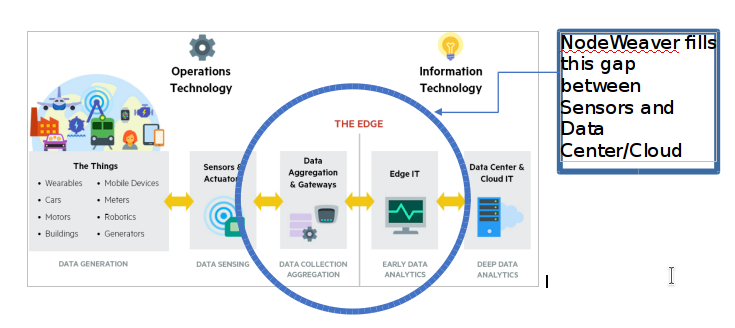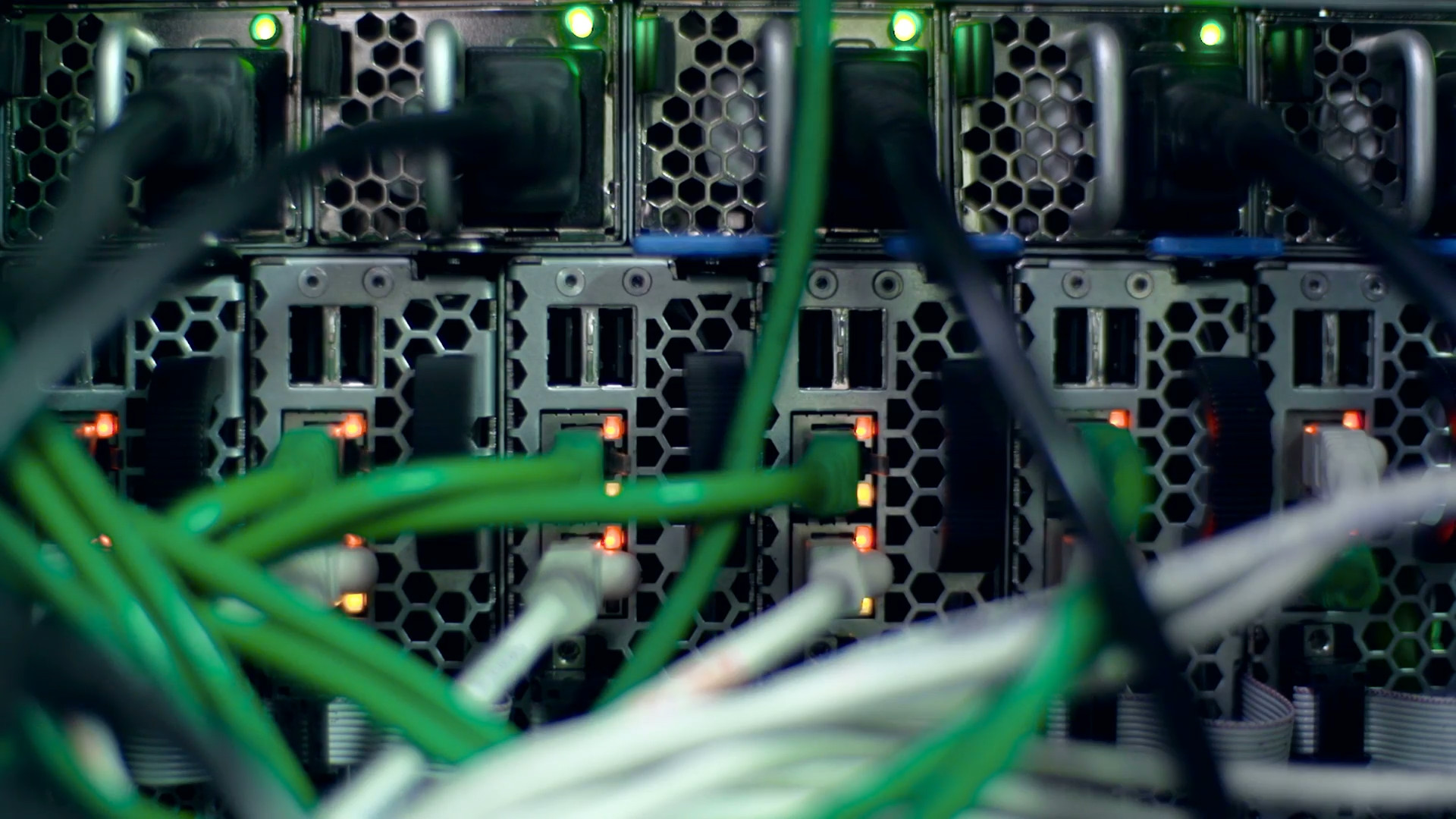NodeWeaver bridges the gap between IoT devices and the Cloud/Core by delivering full datacenter capabilities in edge environments with cloud-like flexibility and management – creating an “Intelligent Edge” on virtually any x86 hardware.

Hyperconvergence (HCI) is the ideal approach to deliver the “Intelligent Edge”. HCI delivers several beneficial features compared to standalone computers using bare-metal operating systems.
- Built-in hypervisor that lets you run multiple virtual machines makes it easy to deploy new applications and functionality as needs change.
- Multi-node clusters provide redundancy for improved application uptime.
- Software-defined storage prevents data loss when drives or entire nodes fail.
- The modular scale-out nature of HCI makes it easy to expand CPU, memory and storage as requirements grow.
- Creates resiliency and ease of scalability by logically pooling the compute resources of the physical devices and creating a high availability cluster (or cloud) which can withstand individual hardware failures as opposed to traditional single-device, bare metal deployments.
However, not all HCI is created equal. There are a number of specific attributes required for the edge
-
Hardware Flexibility and Agnosticity
- A software-only approach is vital as it enables the freedom to optimize the hardware according to the requirements.
- It must run efficiently on less-powerful chipsets and SoCs (system-on-chip) such as Intel’s Atom or AMD’s Epyc and Ryzens, which are purpose-built for the edge.
- In order to avoid hardware lock-in and be able to incrementally swap/upgrade hardware the HCI solution needs to be flexible enough to allow creation of clusters with heterogeneous hardware
- Cost-justifiable
-
Tangible ROI is key for IoT projects and minimizing cost is crucial to achieving positive ROI.
-
At the edge, there could easily be 100s or 1000s of nodes, and competing HCI platforms are simply cost-prohibitive.
-
Striking the right balance between capability and cost is the goal with any deployment. For many of these remote environments, the benefits of deploying HCI can be realized with as few as 2 physical nodes. The question is, does the HCI vendor support true 2-node deployment with full redundancy or do they require quorum, which necessitates a minimum of 3 nodes, thus increasing the cost of small deployments by 50%
-
-
Light weight - doesn’t require a large amount of RAM to simply operate the platform
-
Open source – incorporating open source technologies and the willingness and ability to integrate with other vendors will be key to delivering complete IoT solutions. NodeWeaver is built on open source technologies and is modular in design to facilitate integration with other technologies.
-
Self-healing and autonomic – these features are vital to supporting fleets of physical devices, which are often in remote locations with no IT staff. NodeWeaver eliminates management tasks, handles faults without manual intervention and automatically optimizes I/O flows.
-
API-driven – programmatically control all node properties across large fleets of systems
NodeWeaver is optimized for the Intelligent Edge

